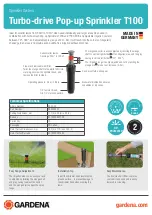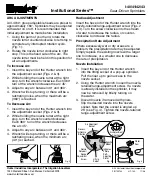
NI WSN-3214 User Guide and Specifications
24
ni.com
The following symbols apply to the circuit diagram and equations:
•
R
1
—Active element measuring compressive Poisson effect (–
νε
).
•
R
2
—Active element measuring tensile Poisson effect (+
νε
).
•
R
3
—Active element measuring compressive strain (–
ε
).
•
R
4
—Active element measuring tensile strain (+
ε
).
•
GF
—Gage Factor, specified by the gage manufacturer.
•
ν
—Poisson’s ratio, defined as the negative ratio of transverse strain to axial strain (longitudinal)
strain. Poisson’s ratio is a material property of the specimen you are measuring.
•
V
CH
—Measured voltage of the bridge.
•
V
EX
—Excitation voltage provided by the NI WSN-3214.
•
V
r
—Offset compensated ratiometric bridge output defined by the following equation:
Note
The ratio of the bridge output voltage to the excitation voltage is calculated internally on the
NI WSN-3214. Shunt Calibration is only supported for quarter-bridge. If you are switching from
using a quarter-bridge to a half-bridge or full-bridge configuration, you need to specify 1 for Shunt
Calibration, and then perform Offset Null in the software.
The NI WSN-3214 converts the readings to strain using the following equation:
Full-Bridge Type III
This section provides information for the full-bridge strain-gage configuration type III. The full-bridge
type III only measures axial strain. Figure 23 shows how to position strain-gage resistors in an axial
configuration. Figure 24 shows the full-bridge type III circuit wiring diagram.
Figure 23.
Full-Bridge Type III Measuring Axial and Rejecting Bending Strain
Vr
VCH
VEX
------------
Shunt Calibration
×
Offset Null
–
=
strain
ε
( )
2
Vr
–
GF
1
ν
+
(
)
--------------------------
=
R
2
(+ )
(+ )
(– )
(– )
R
4
R
3
R
1
R
4
R
3
R
2
R
1
Me
asu
re
s
Axi
a
l
Reject
s
Bending
















































